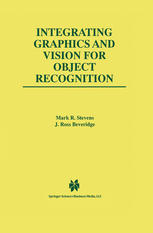

Most ebook files are in PDF format, so you can easily read them using various software such as Foxit Reader or directly on the Google Chrome browser.
Some ebook files are released by publishers in other formats such as .awz, .mobi, .epub, .fb2, etc. You may need to install specific software to read these formats on mobile/PC, such as Calibre.
Please read the tutorial at this link: https://ebookbell.com/faq
We offer FREE conversion to the popular formats you request; however, this may take some time. Therefore, right after payment, please email us, and we will try to provide the service as quickly as possible.
For some exceptional file formats or broken links (if any), please refrain from opening any disputes. Instead, email us first, and we will try to assist within a maximum of 6 hours.
EbookBell Team

4.3
78 reviewsIntegrating Graphics and Vision for Object Recognition serves as a reference for electrical engineers and computer scientists researching computer vision or computer graphics.
Computer graphics and computer vision can be viewed as different sides of the same coin. In graphics, algorithms are given knowledge about the world in the form of models, cameras, lighting, etc., and infer (or render) an image of a scene. In vision, the process is the exact opposite: algorithms are presented with an image, and infer (or interpret) the configuration of the world. This work focuses on using computer graphics to interpret camera images: using iterative rendering to predict what should be visible by the camera and then testing and refining that hypothesis.
Features of the book include: